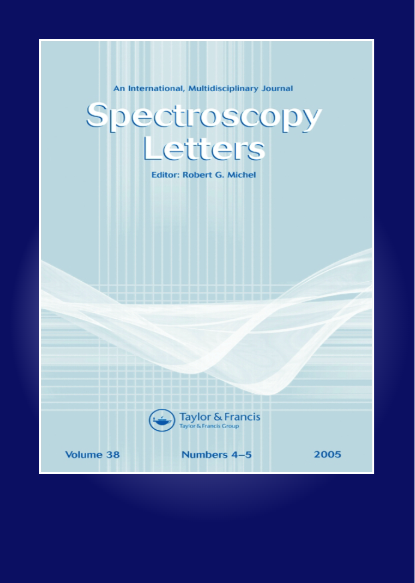一种减缓光栅近红外光谱仪仪器间吸光度漂移的校正方法
IF 1.6
4区 化学
Q3 SPECTROSCOPY
引用次数: 0
摘要
摘要在近红外光谱分析中,仪器波长和宽度的准确性至关重要,因为它构成了转移不同仪器模型的基础。基于光栅的扫描仪器中的波长和吸光度漂移是由光栅、检测器和波长扫描系统的差异引起的。光谱波长漂移可以使用聚乙烯和聚苯乙烯等材料进行校正,这些材料在近红外区域具有吸收峰。为了减少不同波长点光谱的吸光度漂移,本文提出了一种使用少量典型农产品样品的近红外光谱逐点线性校正方法。该方法构建了主仪器和从仪器之间每个波长点的吸光度的线性关系模型。该研究使用了七台基于S450光栅的漫反射近红外光谱仪器,其中一台作为主仪器,其余六台作为从属仪器。采用逐点线性校正方法对从属仪器采集的小麦光谱进行校正,建立了小麦粗蛋白含量预测模型。结果表明,该方法减少了不同仪器之间的光谱差异,提高了光谱一致性,降低了预测误差,实现了仪器之间更好的模型共享。校正后,小麦光谱的平均归一化变异系数下降了95.12%,从7.78%下降到0.38%,预测结果的平均标准差下降了78.18%,从0.5321下降到0.1161。该方法与传统预处理方法相结合的校正效果要好于单独使用预处理方法。总体而言,基于少量典型农产品样本的逐点校正方法对提高近红外光谱分析的准确性有显著作用。本文章由计算机程序翻译,如有差异,请以英文原文为准。
A correction method for mitigating inter-instrumental absorbance drift in grating-based near-infrared spectrometers
Abstract In near-infrared spectroscopy analysis, the accuracy of instrument wavelength and breadth is crucial as it forms the foundation for transferring different instrument models. Wavelength and absorbance drift in grating-based scanning instruments result from differences in the grating, detector, and wavelength scanning system. Spectral wavelength drift can be corrected using materials such as polyethylene and polystyrene, which have absorption peaks in the near-infrared region. To reduce absorbance drift in spectra at different wavelength points, this article proposes a point-by-point linear correction method for near-infrared spectra using a small number of typical agricultural product samples. The method constructs a linear relationship model for the absorbance of each wavelength point between the main instrument and slave instruments. The study used seven S450 grating-based diffuse reflection near-infrared spectroscopy instruments, one serving as the main instrument and the remaining six as slave instruments. The point-by-point linear correction method was used to correct wheat spectra collected by the slave instruments, and a crude protein content model for wheat was established for prediction. The results showed that the method reduces spectral differences between different instruments, improves spectral consistency, and reduces prediction errors, achieving better model sharing between instruments. After correcting, the average normalized variation coefficient of wheat spectra decreased by 95.12%, from 7.78% to 0.38%, and the average standard deviation of the predicted results decreased by 78.18%, from 0.5321 to 0.1161. The correction effect of the method combined with traditional pre-processing methods was better than using pre-processing methods alone. Overall, the point-by-point correction method based on a small number of typical agricultural product samples has a significant effect on improving the accuracy of near-infrared spectroscopy analysis.
求助全文
通过发布文献求助,成功后即可免费获取论文全文。
去求助
来源期刊

Spectroscopy Letters
物理-光谱学
CiteScore
2.90
自引率
5.90%
发文量
50
审稿时长
1.3 months
期刊介绍:
Spectroscopy Letters provides vital coverage of all types of spectroscopy across all the disciplines where they are used—including novel work in fundamental spectroscopy, applications, diagnostics and instrumentation. The audience is intended to be all practicing spectroscopists across all scientific (and some engineering) disciplines, including: physics, chemistry, biology, instrumentation science, and pharmaceutical science.
 求助内容:
求助内容: 应助结果提醒方式:
应助结果提醒方式:


